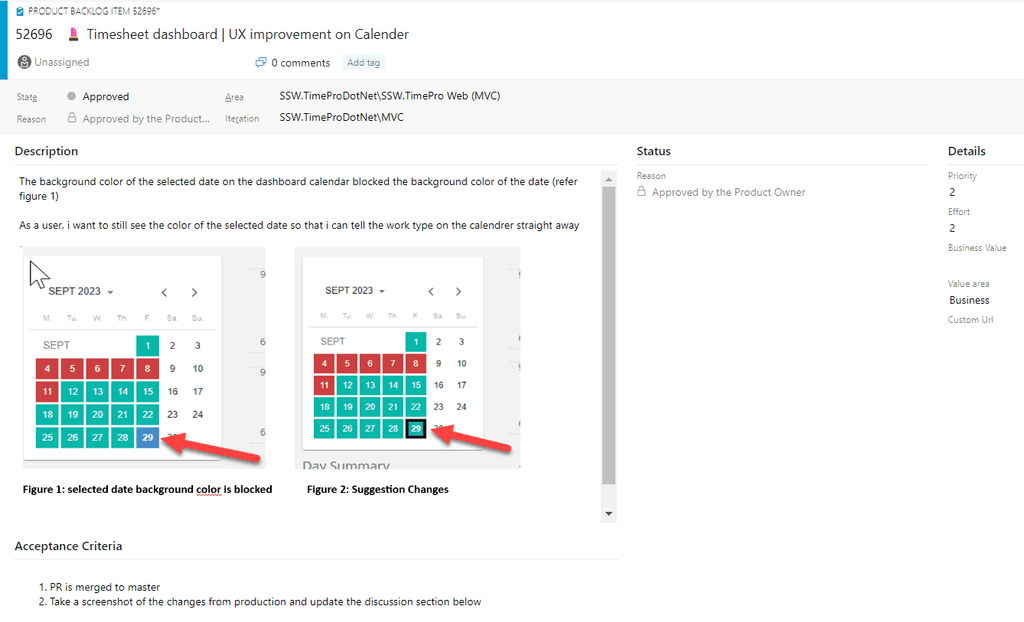Just like how the team has a Definition of Done as a checklist for completing a PBI; the Product Owner needs a Definition of Ready (DoR) to get the PBI in a state that’s ready to be added to a Sprint. This should be done as part of the refinement (aka grooming) process and will greatly streamline the Sprint Planning meeting.
A recommended “Definition of Ready” would have:
- Enough detail for the team to action (usually via good Acceptance Criteria)
- Business Value assigned
- Effort assigned
- Approved state
When the PBI is approved, ask for a signature (or simply an initial) as a prove of approval.
Warning: PBIs might be accepted into a Sprint even if they do not meet the DoR. When that happens, there will be more risk and uncertainty around the PBI. It is highly discouraged for not-ready PBIs to be included in a Sprint, as they can hinder progress and disrupt the team's workflow.
INVEST principle
The acronym INVEST serves as a helpful reminder of a widely accepted set of criteria, or checklist, used to evaluate the quality of a PBI. If a story does not meet one of these criteria, the team may need to revise or even rewrite it for better clarity and effectiveness.
PBIs should follow the INVEST principle:
"I" ndependent (of all others)
"N" egotiable (not a specific contract for features)
"V" aluable (or vertical)
"E" stimable 👑 (to a good approximation)
"S" mall (so as to fit within an iteration)
"T" estable 👑 (in principle, even if there isn’t a test for it yet)
While acronyms like INVEST can seem over-elaborate, they offer a helpful framework to ensure consistency and clarity in evaluating PBIs.
Following the update to the Scrum Guide for 2020, this is the concept of a Product Backlog being "Ready".




